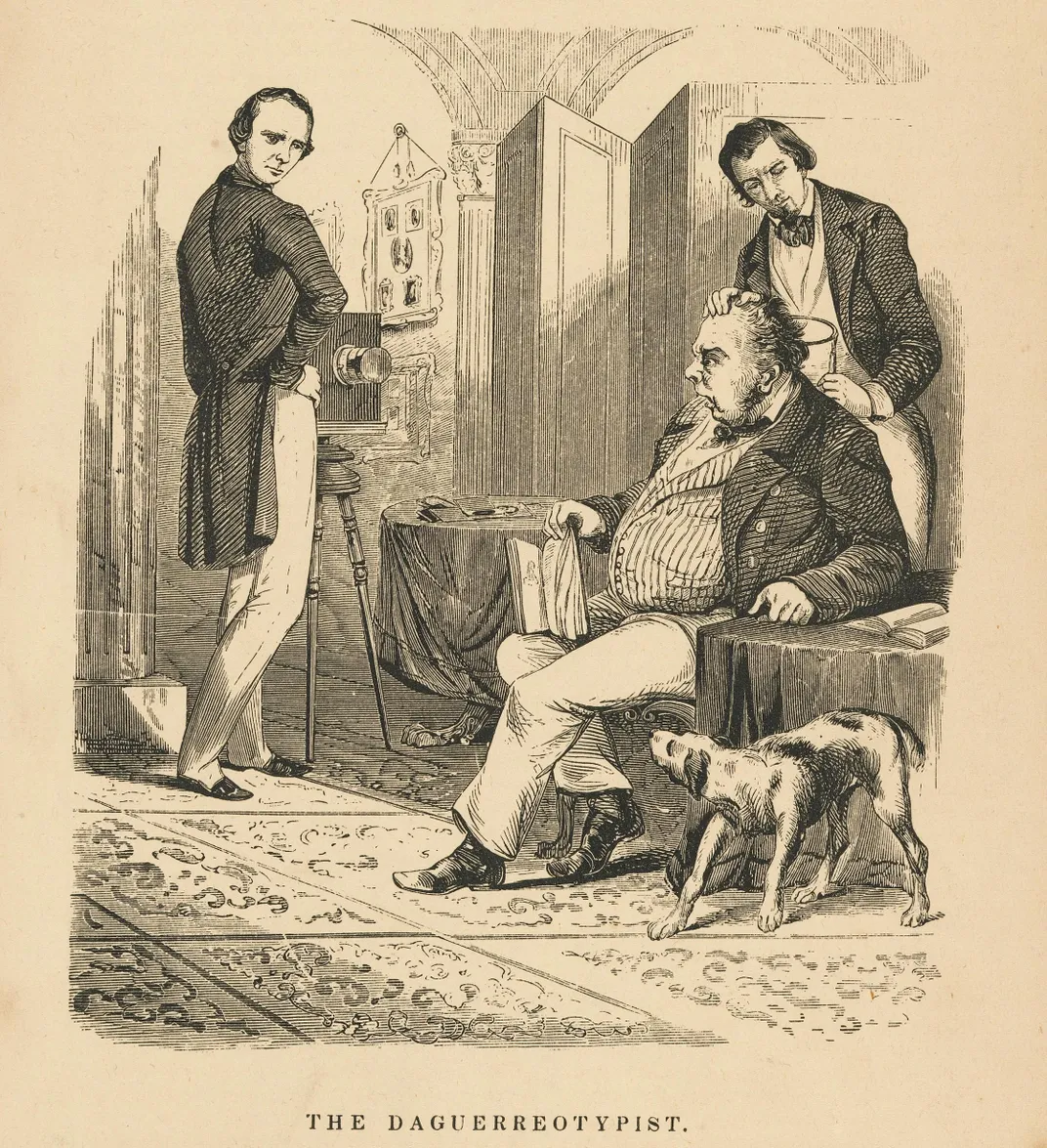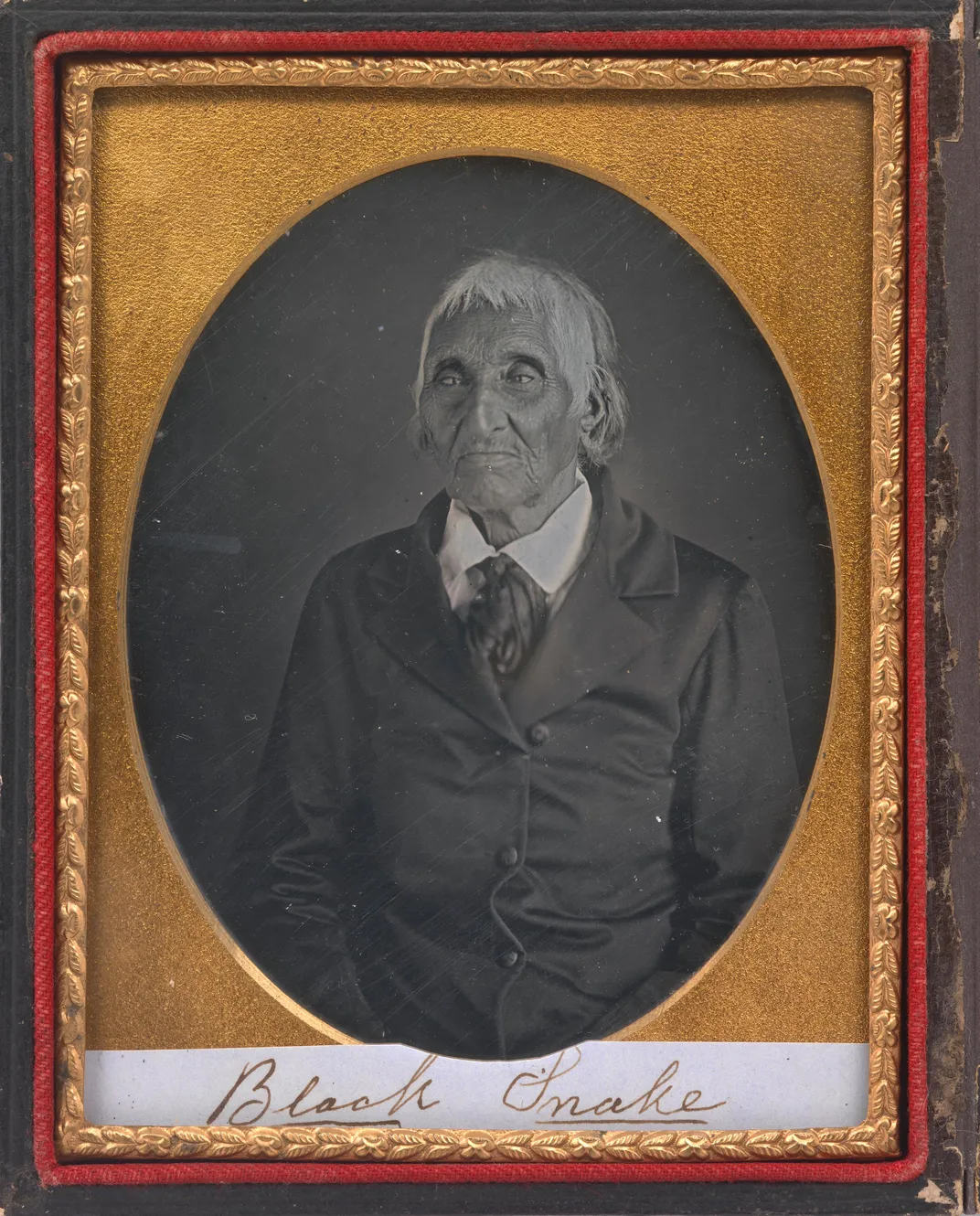How Daguerreotype Photography Reflected a Changing America
The National Portrait Gallery brings the eerie power of a historic medium into focus
/https://tf-cmsv2-smithsonianmag-media.s3.amazonaws.com/filer/bd/7d/bd7d625e-d40d-431e-baca-34578201261b/daguerreotype4.jpg)
As denizens of the digital world, most contemporary Americans are exposed daily to dozens of photographs of friends, loved ones, celebrities and strangers. We capture and distribute images of ourselves and others with shockingly little effort, rarely if ever stepping back to marvel at the power we wield.
Our smartphones enable us to immortalize moments in our lives with crystal-clear fidelity—defying the inevitability of time’s passage whenever the whim strikes us—yet we go about the assembly of our collective visual history not with awe and zeal, but with the detached blitheness that so often comes with too much of a good thing.
Such was not the case in the mid-19th century, when the first-ever widely accessible form of photography, known as the daguerreotype process, made its way to the young United States.
Before this time, it was impossible to know someone’s true appearance unless you met them in person. You could not look back on the faces of your children once they reached adulthood, nor those of your late parents once they were laid to rest. Experiences and happenings were preserved only after hours of effort painting, drawing or writing prose, and even then, with striking imperfection. Daguerreotypes gave the American people the ability to preserve, not merely imagine, their collective history.
To honor of this foundational medium, the National Portrait Gallery is showcasing a selection of mid-19th century daguerreotypes—12 in all—through June 2 of next year. The Portrait Gallery began collecting daguerreotypes in 1965, three years prior to its opening to the public, when it did not yet have the authority to acquire photographs. This year, in recognition of its 50th anniversary, the museum is celebrating the irrevocable impact these early images made on the field of portraiture at large.

Daguerreotypes were named in honor of their French inventor Louis Daguerre, who made his innovative technique “free to the world” via an arrangement with the French government.
Daguerre built on the work of photography pioneer Nicéphore Niépce, with whom he corresponded profusely, taking Niépce’s principle of exposing a treated surface to filtered light and rendering the process (relatively) quick and practical.
Daguerre’s method relied on copper plates coated on one face with highly reflective buffed silver and chemically primed for exposure in “sensitizing boxes” filled with iodine and bromine. Once a daguerreotypist ensured a given plate was receptive to light, they would insert it into a bulky camera obscura (Latin for “dark room”), which admitted outside illumination only through a single, small aperture, covered by a lens.
After a lengthy exposure period (sitting still for a daguerreotype portrait took some doing), the plate would be ready for primetime. Having developed the plate with the aid of hot gaseous mercury, the photographer would immerse it in a fixing solution, wash it, and usually tone it with gold chloride before setting it in a suitable viewing case or frame.
“For proper viewing,” says Ann Shumard, curator of the new exhibition, “the daguerreotype must be displayed at just the right angle for the image to be visible. Otherwise, it all but disappears, and the silver plate reverts to a mirror.” The spectral nature of daguerreotypes lends them an intriguing eeriness, and their duality of mirror and image implicates the viewer in what they’re seeing in a way common to no other medium. “This gives the daguerreotype an almost magical quality,” Shumard says.

Though European in origin, the mystique of Daguerre’s portraiture caught on in America like nowhere else. “It enjoyed its greatest popularity in the United States,” Shumard says, “thanks to the entrepreneurial spirit of American practitioners and a middle class made up of eager consumers.”
The delicacy of daguerreotypes, though in many ways a selling point, does give rise to certain practical concerns. If allowed contact with outside oxygen, for instance, the metallic plates gradually tarnish. “The National Portrait Gallery’s photographic conservator ensures that each daguerreotype is protected by a coverglass and carefully sealed to prevent air from reaching the plate,” Shumard explains. “When not on exhibition, the museum’s daguerreotypes are stored in customized archival boxes in a climate-controlled environment.”
Just as fascinating as the technique behind the daguerreotype portraits on display are the subjects they depict. An eclectic cross-section of mid-19th century American luminaries, the lineup includes mental healthcare reformer Dorothea Dix, Navy Commodore Matthew Perry (best remembered for his expedition to Japan), prototypical impresario P.T. Barnum alongside circus entertainer Tom Thumb, and transcendentalist author Henry David Thoreau.
One daguerreotype Shumard finds particularly arresting is a portrait of Seneca Nation leader Blacksnake, whose thoughtful off-camera gaze and firmly closed lips give the image an air of serene dignity. “After supporting the British during the American Revolution,” Shumard says, “Blacksnake joined the large contingent of Seneca and other Six Nations members who negotiated with the United States in 1797 to secure reservations in western New York.” A poised and pragmatic leader, Blacksnake also championed an educational system for the Seneca blending traditional Native American practices and beliefs with Western ones. “He is the only Native American represented in our daguerreotype collection,” Shumard says.
Many other rich historical narratives live within the portraits on display, which would not exist absent the accessible mode of photography dreamt up by Louis Daguerre and his generosity in allowing it to proliferate worldwide. “Through daguerreotype portraiture,” Shumard says, “the National Portrait Gallery is able to represent individuals who would otherwise remain absent from our visual narrative of the nation’s history.” Visitors to the Gallery are invited to contemplate the humanity captured in each image—and its relation to their own, fleetingly reflected in the portraits’ silver sheen.
“Daguerreotypes: Five Decades of Collecting” is on view at the Smithsonian’s National Portrait Gallery in Washington, D.C. through June 2, 2019.
/https://tf-cmsv2-smithsonianmag-media.s3.amazonaws.com/accounts/headshot/DSC_02399_copy.jpg)
/https://tf-cmsv2-smithsonianmag-media.s3.amazonaws.com/accounts/headshot/DSC_02399_copy.jpg)